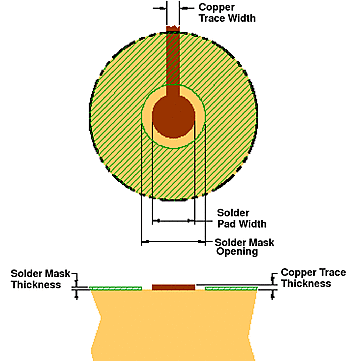ZHCSDF3D May 2014 – March 2018 DRV2605L
PRODUCTION DATA.
- 1 特性
- 2 应用
- 3 说明
- 4 修订历史记录
- 5 Pin Configuration and Functions
- 6 Specifications
- 7 Parameter Measurement Information
-
8 Detailed Description
- 8.1 Overview
- 8.2 Functional Block Diagram
- 8.3
Feature Description
- 8.3.1 Support for ERM and LRA Actuators
- 8.3.2 Smart-Loop Architecture
- 8.3.3 Open-Loop Operation for LRA
- 8.3.4 Open-Loop Operation for ERM
- 8.3.5 Flexible Front-End Interface
- 8.3.6 Edge Rate Control
- 8.3.7 Constant Vibration Strength
- 8.3.8 Battery Voltage Reporting
- 8.3.9 One-Time Programmable (OTP) Memory for Configuration
- 8.3.10 Low-Power Standby
- 8.3.11 I2C Watchdog Timer
- 8.3.12 Device Protection
- 8.4 Device Functional Modes
- 8.5
Programming
- 8.5.1 Auto-Resonance Engine Programming for the LRA
- 8.5.2 Automatic-Level Calibration Programming
- 8.5.3 I2C Interface
- 8.5.4 Programming for Open-Loop Operation
- 8.5.5 Programming for Closed-Loop Operation
- 8.5.6 Auto Calibration Procedure
- 8.5.7 Programming On-Chip OTP Memory
- 8.5.8 Waveform Playback Programming
- 8.6
Register Map
- 8.6.1 Status (Address: 0x00)
- 8.6.2 Mode (Address: 0x01)
- 8.6.3 Real-Time Playback Input (Address: 0x02)
- 8.6.4 Library Selection (Address: 0x03)
- 8.6.5 Waveform Sequencer (Address: 0x04 to 0x0B)
- 8.6.6 GO (Address: 0x0C)
- 8.6.7 Overdrive Time Offset (Address: 0x0D)
- 8.6.8 Sustain Time Offset, Positive (Address: 0x0E)
- 8.6.9 Sustain Time Offset, Negative (Address: 0x0F)
- 8.6.10 Brake Time Offset (Address: 0x10)
- 8.6.11 Audio-to-Vibe Control (Address: 0x11)
- 8.6.12 Audio-to-Vibe Minimum Input Level (Address: 0x12)
- 8.6.13 Audio-to-Vibe Maximum Input Level (Address: 0x13)
- 8.6.14 Audio-to-Vibe Minimum Output Drive (Address: 0x14)
- 8.6.15 Audio-to-Vibe Maximum Output Drive (Address: 0x15)
- 8.6.16 Rated Voltage (Address: 0x16)
- 8.6.17 Overdrive Clamp Voltage (Address: 0x17)
- 8.6.18 Auto-Calibration Compensation Result (Address: 0x18)
- 8.6.19 Auto-Calibration Back-EMF Result (Address: 0x19)
- 8.6.20 Feedback Control (Address: 0x1A)
- 8.6.21 Control1 (Address: 0x1B)
- 8.6.22 Control2 (Address: 0x1C)
- 8.6.23 Control3 (Address: 0x1D)
- 8.6.24 Control4 (Address: 0x1E)
- 8.6.25 Control5 (Address: 0x1F)
- 8.6.26 LRA Open Loop Period (Address: 0x20)
- 8.6.27 V(BAT) Voltage Monitor (Address: 0x21)
- 8.6.28 LRA Resonance Period (Address: 0x22)
- 9 Application and Implementation
- 10Power Supply Recommendations
- 11Layout
- 12器件和文档支持
- 13机械、封装和可订购信息
11.1 Layout Guidelines
Use the following guidelines for the DRV2605L layout:
- The decoupling capacitor for the power supply (VDD) should be placed closed to the device pin.
- The filtering capacitor for the regulator (REG) should be placed close to the device REG pin.
- When creating the pad size for the WCSP pins, TI recommends that the PCB layout use nonsolder mask-defined (NSMD) land. With this method, the solder mask opening is made larger than the desired land area and the opening size is defined by the copper pad width. Figure 65 shows and Table 34 lists appropriate diameters for a wafer-chip scale package (WCSP) layout.
 Figure 65. Land Pattern Dimensions
Figure 65. Land Pattern Dimensions Table 34. Land Pattern Dimensions
| SOLDER PAD
DEFINITIONS |
COPPER PAD | SOLDER MASK
OPENING |
COPPER
THICKNESS |
STENCIL
OPENING |
STENCIL
THICKNESS |
|---|---|---|---|---|---|
| Nonsolder mask
defined (NSMD) |
275 µm
(0, –25 µm) |
375 µm
(0, –25 µm) |
1-oz maximum (32 µm) | 275 µm × 275 µm2
(rounded corners) |
125-µm thick |
- Circuit traces from NSMD defined PWB lands should be 75-µm to 100-µm wide in the exposed area inside the solder mask opening. Wider trace widths reduce device stand-off and impact reliability.
- The recommended solder paste is Type 3 or Type 4.
- The best reliability results are achieved when the PWB laminate glass transition temperature is above the operating the range of the intended application.
- For a PWB using a Ni/Au surface finish, the gold thickness should be less than 0.5 µm to avoid a reduction in thermal fatigue performance.
- Solder mask thickness should be less than 20 µm on top of the copper circuit pattern.
- The best solder stencil performance is achieved using laser-cut stencils with electro polishing. Use of chemically-etched stencils results in inferior solder paste volume control.
- Trace routing away from the WCSP device should be balanced in X and Y directions to avoid unintentional component movement because of solder-wetting forces.